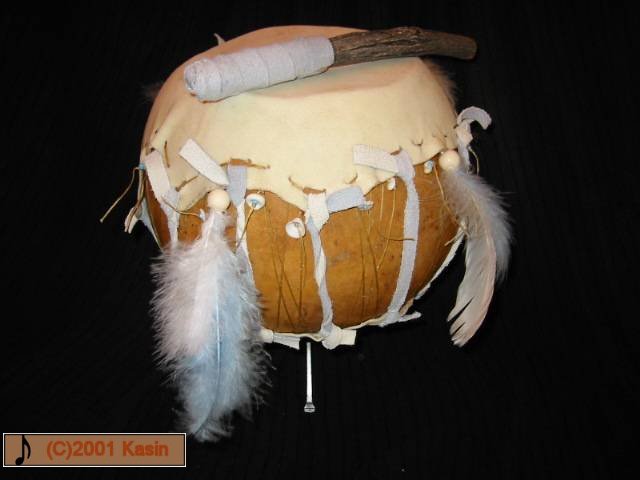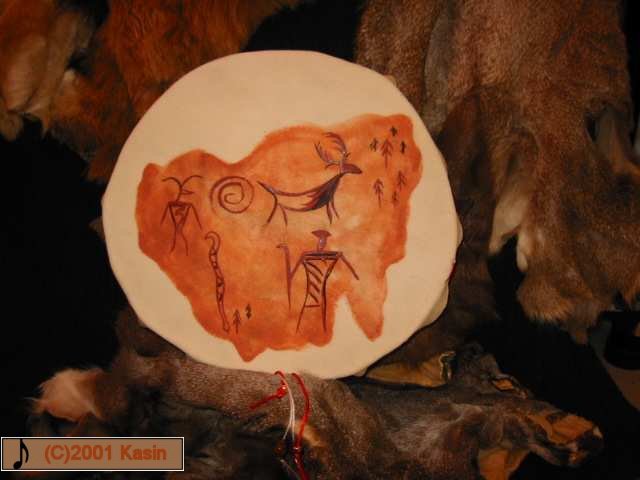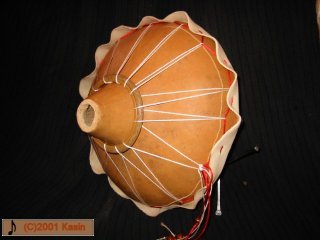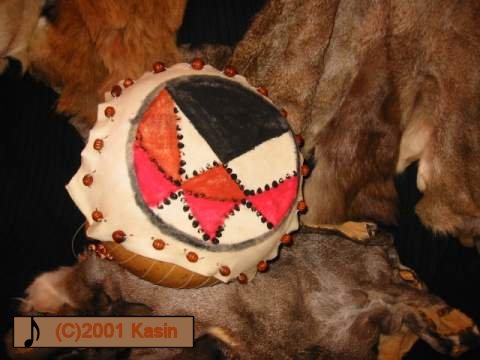Drums by Kasin Hunter, 2001
Row Two
The lovely Barrel drum shows how a closed bottom bushel gourd can be used.
Instead of a ring on the bottom, the maker uses a secondary round of leather. The
lacing is then lashed back and forth, holding the top beating leather in place.
Light blues and whites are carried through the design by leather strips, shells,
heishi, and feathers. A leather-wrapped stick in complimentary blue serves as the beater.

This next example is a quasi-Conical drum. Conical drums have sloping sides and one head, being
open on the bottom for a better sounding effect. As shown in the righthand picture, this
quasi-Conical drum was made from the lid of a kettle gourd with the extreme end cut open for
the sounding hole. A plastic ring (an embroidary hoop - how creative!) was used for the
bottom lashing post.


This African-style drum done in a bent Goblet shape uses a simple cord as the
bottom lashing post. As can be seen in the second picture, a hole has also been cut
into the bottom part of the long neck for enhancement of sound.


 Drum beaters can be
made from a variety of materials and still work very effectively.
In the picture below, you see five rather easy to construct drum beaters.
Drum beaters can be
made from a variety of materials and still work very effectively.
In the picture below, you see five rather easy to construct drum beaters. Here's a drum that doesn't need a beater, that's
because, it's not a membranophone; it's an idiophone, a self-sounding drum.
This Ipu Heke stands about three feet tall. It is
played by pounding it on the ground, or if you like, slapped with your hand.
Here's a drum that doesn't need a beater, that's
because, it's not a membranophone; it's an idiophone, a self-sounding drum.
This Ipu Heke stands about three feet tall. It is
played by pounding it on the ground, or if you like, slapped with your hand.